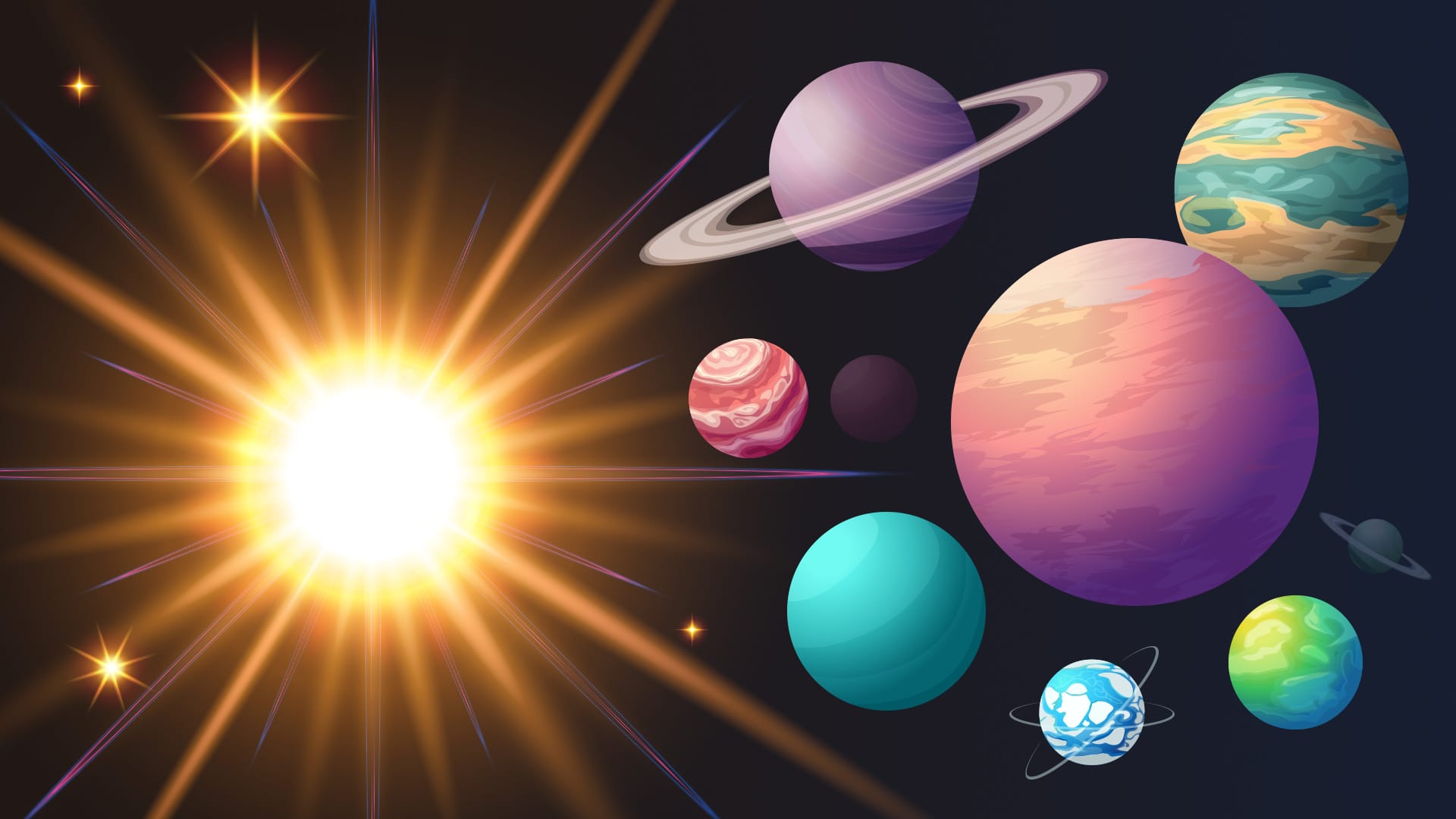Definition and Classification
The term "planet" originates from the Greek word planētēs, meaning "wanderer," reflecting the apparent motion of these bodies against the backdrop of fixed stars. Historically, the definition of a planet has evolved. In 2006, the International Astronomical Union (IAU) established a formal definition, stating that a planet is a celestial body that:
- –Orbits the Sun.
- –Has sufficient mass for its self-gravity to overcome rigid body forces, resulting in a nearly round shape.
- –Has cleared the neighborhood around its orbit.
Bodies that meet the first two criteria but not the third are classified as "dwarf planets," such as Pluto. This reclassification has been a subject of debate within the scientific community and the public.
Types of Planets
Planets are broadly categorized based on their physical characteristics:
- –
Terrestrial Planets: These are Earth-like planets composed primarily of rock and metal. They have solid surfaces and are located closer to their parent stars. In our Solar System, Mercury, Venus, Earth, and Mars fall into this category.
- –
Gas Giants: Massive planets with thick atmospheres composed mainly of hydrogen and helium. They lack well-defined solid surfaces. Jupiter and Saturn are examples within our Solar System.
- –
Ice Giants: Similar to gas giants but with higher proportions of elements like water, ammonia, and methane, which exist as ices. Uranus and Neptune are classified as ice giants.
- –
Super-Earths: Exoplanets with masses between Earth's and Neptune's. They can be rocky, gaseous, or a combination of both.
- –
Mini-Neptunes: Smaller than Neptune but larger than Earth, these exoplanets have thick atmospheres and are common in other planetary systems.
Formation and Evolution
Planets form from the protoplanetary disks of gas and dust that surround young stars. The leading theory, the nebular hypothesis, suggests that these disks coalesce to form planetesimals, which then collide and merge to form planets. This process can take millions of years and results in a diverse array of planetary systems.
Exoplanets
Exoplanets are planets located outside our Solar System. Since the first confirmed discovery in 1992, over 5,000 exoplanets have been identified. These discoveries have expanded our understanding of planetary systems and the potential for habitable worlds beyond Earth. Exoplanets exhibit a wide range of characteristics, including:
- –
Hot Jupiters: Gas giants that orbit very close to their parent stars, resulting in high surface temperatures.
- –
Rogue Planets: Planets not bound to any star, drifting through space independently.
- –
Circumbinary Planets: Planets that orbit two stars, similar to the fictional Tatooine from Star Wars.
Detection Methods
Detecting exoplanets is challenging due to their faintness and proximity to bright stars. Common methods include:
- –
Transit Method: Observing the dimming of a star's light as a planet passes in front of it.
- –
Radial Velocity Method: Measuring the wobble of a star caused by the gravitational pull of an orbiting planet.
- –
Direct Imaging: Capturing images of exoplanets by blocking out the star's light.
Notable Discoveries
- –
51 Pegasi b: Discovered in 1995, it was the first confirmed exoplanet orbiting a Sun-like star.
- –
TRAPPIST-1 System: Contains seven Earth-sized planets, three of which are in the habitable zone where liquid water could exist.
- –
Proxima Centauri b: The closest known exoplanet, located in the habitable zone of Proxima Centauri, the nearest star to the Sun.
Ongoing Research
Advancements in technology, such as the James Webb Space Telescope, continue to enhance our ability to study planets both within and beyond our Solar System. Research focuses on understanding planetary formation, evolution, and the potential for life elsewhere in the universe.
Controversies and Debates
The reclassification of Pluto as a dwarf planet sparked public and scientific debate. Some astronomers advocate for a geophysical definition of planets, emphasizing intrinsic properties over orbital dynamics. This discussion reflects the evolving nature of scientific classification as new discoveries are made.
Conclusion
Planets are diverse celestial bodies that play a crucial role in our understanding of the universe. From the familiar planets of our Solar System to the myriad exoplanets being discovered, each offers unique insights into planetary science, formation, and the potential for life beyond Earth.
